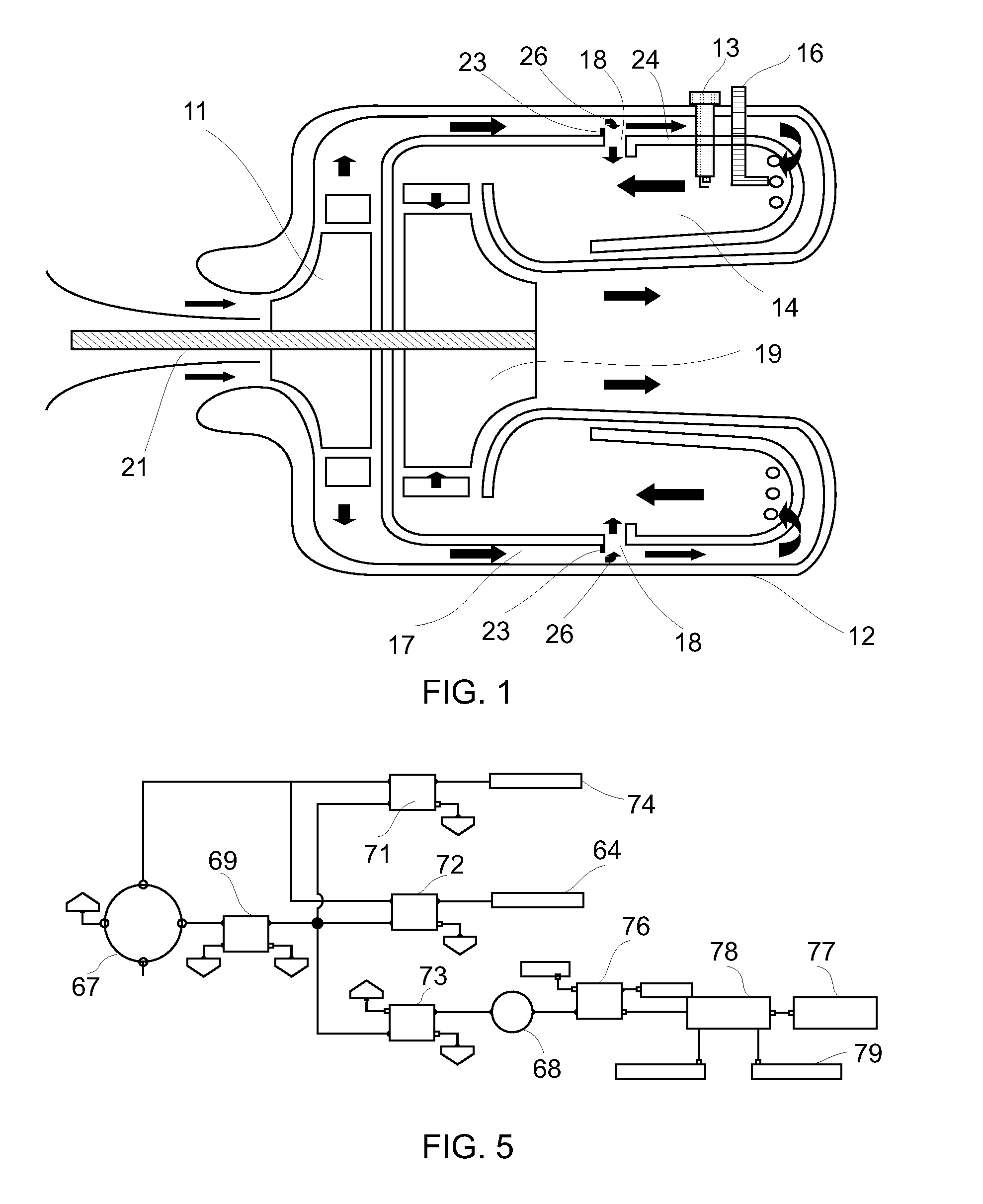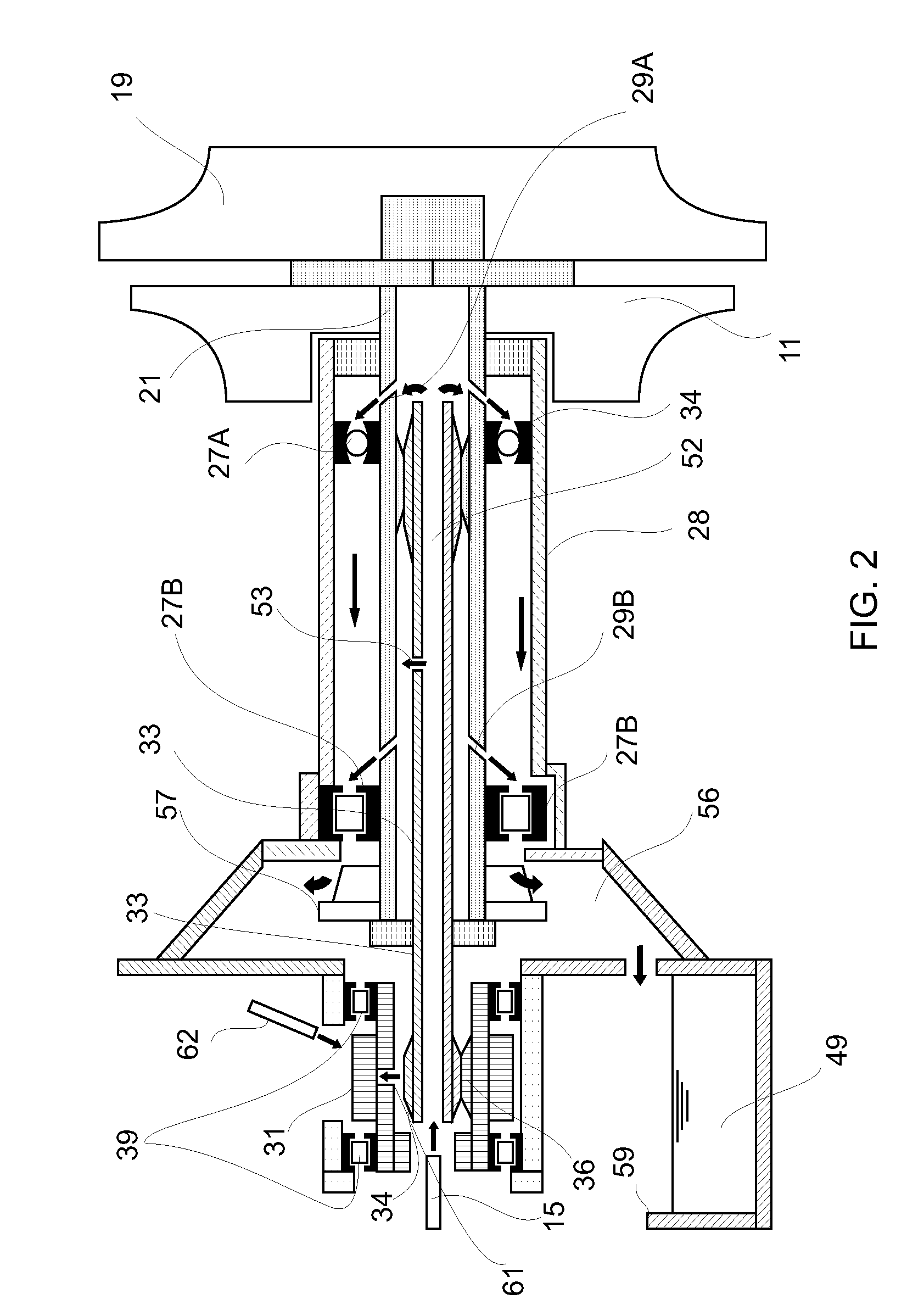Reciprocating engines use up a lot of
closed space which has to be adapted to tolerate heavy weights and medium- and low-frequency vibrations, high maintenance costs and a
narrow range of fuels.
Furthermore, these engines take a long time to warm up and get into condition for connecting to the power lines, which hinders their availability to swiftly respond to demand or else causes high maintenance costs when it is stopped for servicing to be carried out while still hot to reduce the outage time.
Compared to turbo-engines, these engines are heavier per unit of delivered power, highly complex because of the large quantity of
moving parts they contain and require periodic specialized inspections.
Light one-to-four seating helicopters are particularly penalized because there is no alternative for them other than
combustion engines.
Therefore, their capabilities are severely restricted by the need to carry a heavy power
plant, a significant weight compared to one or more passengers.
Stresses and vibrations transmitted to the whole helicopter and to the passengers or the use of reciprocating engines further significant deter use of these helicopters.
On the other hand, an unfavorable feature is that turbo-engines lack massive oscillating or eccentric mechanisms, hence dynamic high-amplitude and low-frequency stresses are transmitted to the structure thereof.
Combustion engines may only use aircraft petrol which is very volatile and explosive, leading therefore to safety concerns.
Too early
fuel injection of fuel would lead to an excessive rise of temperature inside the
combustion chamber (because the
turbine speed is below the predetermined point and there is not enough air intake to match the fuel flow) and, depending on how early
fuel injection began, would produce a dangerous
flame out from the exhaust duct of the turbo-engine or there would be no ignition at all leading to an undesirable accumulation of unspent fuel in the
combustion chamber.
One of the greater technical problems in designing an efficient, low-
power turbine is that, due to physical operational principles, a reduction in the flow capacity and size thereof leads to having to increase the rotation speed of the compressor-
turbine assembly, thereby significantly increasing mechanical stress on the
moving parts materials.
This conditions the life-term of the components and is in part associated with the wear of the
moving parts.
The electronic components for
signal processing and amplification are subjected to electro-
magnetic noise and electrical failures, so that relying on such electronic means raises reliability concerns and, even more serious, is potentially physically hazardous for the
human operator.
Hence a drawback is the need for an additional
coupling gear, resulting in more parts, weight and difficult disassembling, detrimental to compactness and simplicity.
These devices have to be adjusted with extreme precision because of the narrow tolerances they are built around and are intensely affected by variations of atmospheric conditions.
Since these mechanisms are made up of a number of parts, it is considerably expensive and difficult to include redundant systems to improve the reliability thereof and of the entire engine turbine in general.
Furthermore, the operation of these mechanisms involves a complex ignition and control procedure during which the different ignition stages have to be manually enabled and disabled, opening the door to a new range of potential faults arising from human operational errors.
Although this reduces the probability of
human error, yet more systems are added to the already extremely complex systems of the turbine per se, adding further penalties in terms of cost and weight and introducing new fault sequences.
Because the auxiliary systems of the turbo-engines are complex, the power consumed by the auxiliary systems of high-power turbo-engines is similar to that of the systems of small turbo-engines.
This curtails the design and implementation of low-power turbo-engines, as upper limits in the
power consumption of auxiliary systems come into play in order for the operation of the turbine at low-power cruising speeds be self-sustainable.
This prior art has the drawback that the control valve has to be operated via servomechanisms or else by means of the
usual control cables, adding more devices with their attendant fault and maintenance rates.
In general, it can be said that the traditional aircraft
turboshaft designs cannot be extrapolated down to the low-power range and still match the reliability, durability, efficiency and simplicity required in commercial
aviation or avoid drawbacks in maintenance and wear for the generation of
electricity or useful work on the ground.
As explained hereinbefore, this is due to the complexity and technical problems that need to be overcome go up as the power and the size thereof go down.
Proof of this is that available low-power turboshafts used for fixed or military installations are very complex, have limited lifespan, require a lot of maintenance and are pretty expensive considering the low power levels involved.
 Login to View More
Login to View More  Login to View More
Login to View More 


